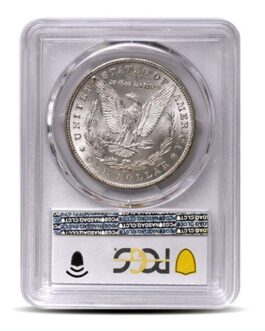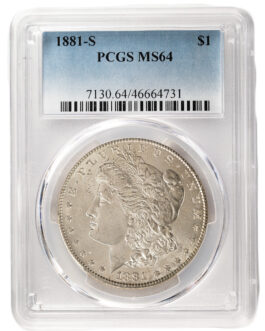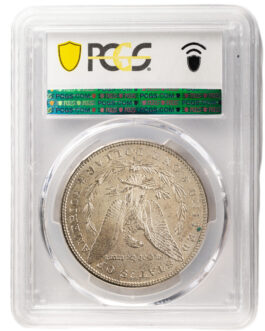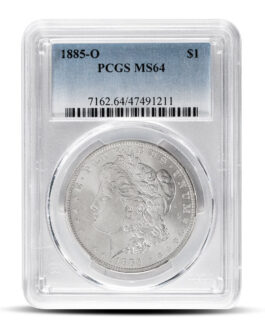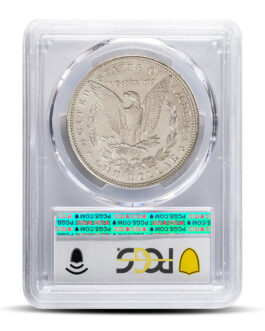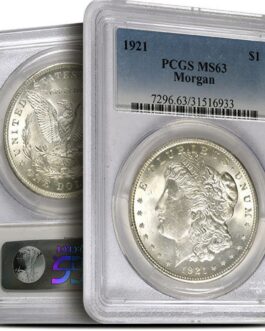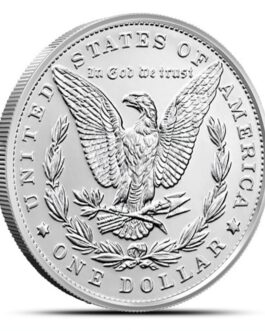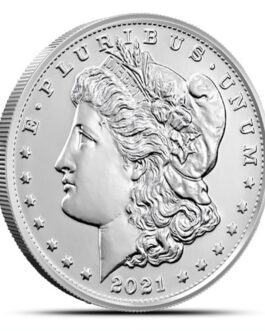History of the Morgan Silver Dollar
Buy Morgan Dollar is one of the most famous and most highly collected U.S. coins of all time. These large silver coins are known for their value, quality of strike, design and beauty. This series may be the most common of all 19th-century U.S. coins. Morgan Silver Dollars hold immense historical significance, being a major part of America’s early development westward. There are many numerous varieties and overdates, which makes collecting them both complex and interesting. Many key production dates fall between 1878 and 1904. 1921 was the last year Morgan Dollars were minted with George T. Morgan’s Lady Liberty design, making the silver coin highly sought after all over the world.
Morgan Silver Dollar Circulation
The Morgan Dollar circulated from 1878 to 1904. It came back into circulation for one year only, in 1921. This marked the only year the coins were minted in Denver. The Morgan Silver Dollars had more in circulation than the Peace Dollars because of the silver available at the time. After the war, residents and businesses stockpiled silver. Other denominations were increasingly on the rise as well because technological advances made it possible.
1921 Morgan Silver Dollars
The 1921 Morgan Silver Dollar is a popular coin for collectors all over the world. It was an important coin that helped usher in the westward expansion of the United States. There are unique characteristics about the 1921 Morgan Silver Dollar as compared to silver coins that preceded them. Numismatists have enjoyed the Morgan Silver Dollar for years for various reasons including its beauty and historical significance.
PCGS Certified Morgan Silver Dollars
Professional Coin Grading Service (PCGS) represents the industry standard in third-party certification. PCGS built its grading standards upon the Sheldon Scale when it introduced the concept of encapsulated, third-party grading in 1986. Grading standards refers to the descriptions assigned to each number of the grading scale, explained in more detail below:
• MS/PF-70: A coin with no post-production imperfections at 5x magnification.
• MS/PF-69: A fully struck coin with nearly imperceptible imperfections.
• MS/PF-68: Very sharply struck with only miniscule imperfections.
• MS/PF-67: Sharply struck with only a few imperfections.
• MS/PF-66: Very well struck with minimal marks and hairlines.
• MS/PF-65: Well struck with moderate marks or hairlines.
• MS/PF-64: Average or better strike with several obvious marks or hairlines and other miniscule imperfections.
• MS/PF-63: Slightly weak or average strike with moderate abrasions and hairlines of varying sizes.
• MS/PF-62: Slightly weak or average strike with no trace of wear. More or larger abrasions than an MS/PF-63.
• MS/PF-61: Weak or average strike with no trace of wear. More marks and/or multiple large abrasions.
• MS/PF-60: Weak or average strike with no trace of wear. Numerous abrasions, hairlines and/or large marks.
• AU-58: Slight wear on the highest points of the design. Full details.
• AU-55: Slight wear on less than 50% of the design. Full details.
• AU-53: Slight wear on more than 50% of the design. Full details except for very minor softness on the high points.
• AU-50: Slight wear on more than 50% of the design. Full details except for minor softness on the high points.
• XF-45: Complete details with minor wear on some of the high points.
• XF-40: Complete details with minor wear on most of the high points.
• VF-35: Complete details with wear on all of the high points.
• VF-30: Nearly complete details with moderate softness on the design areas.
• VF-25: Nearly complete details with more softness on the design areas.
• VF-20: Moderate design detail with sharp letters and digits.
• F-15: Recessed areas show slight softness. Letters and digits are sharp.
• F-12: Recessed areas show more softness. Letters and digits are sharp.
• VG-10: Wear throughout the design. Letters and digits show softness.
• VG-8: Wear throughout the design. Letters and digits show more softness.
• G-6: Peripheral letters and digits are full. Rims are sharp.
• G-4: Peripheral letters and digits are nearly full. Rims exhibit wear.
• AG-3: Most letters and digits are readable. Rims are worn into the fields.
• FR-2: Some details are visible. Rims are barely visible.
• PO-1: Enough detail to identify the coin’s date and type. Rims are flat or nearly flat.


